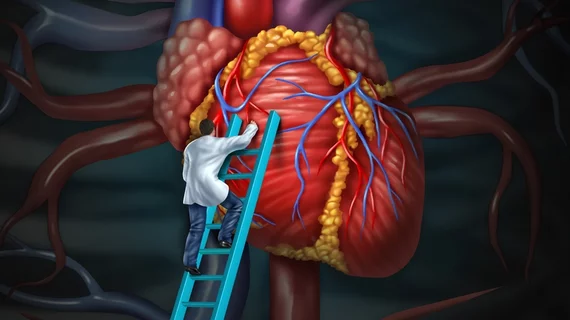Interventional cardiologists in the United States are taking on a wide variety of responsibilities, according to new data published in the American Journal of Cardiology.
“Interventional cardiologists predominantly perform percutaneous coronary interventions (PCIs), but over time, their scope has expanded to include peripheral vascular disease and catheter-based treatments of structural heart disease,” wrote first author Karthik Murugiah, MD, a specialist from Yale School of Medicine, and colleagues. “In addition, interventional cardiologists, similar to general cardiologists, often interpret noninvasive cardiac imaging. With the rapid evolution of the field of interventional cardiology, the contemporary scope of practice of interventional cardiologists in the United States and recent trends are unknown.”
Murugiah et al. explored Medicare data, focusing on more than 6,000 specialists who performed at least 10 PCI procedures on Medicare beneficiaries in 2017.
Overall, 82.4% of interventional cardiologists billed for reading echocardiograms. While 56% billed for nuclear studies, 13.2% billed for structural interventions and 8.8% billed for peripheral interventions.
In addition, the authors separated specialists into four distinct practice categories, noting that 68.3% handled both PCIs and noninvasive imaging, 10.9% handled PCIs only and 5.7% handled PCIs and peripheral/structural interventions. The remaining 15.1% of interventional cardiologists said they take on PCIs, noninvasive imaging and peripheral/structural interventions. PCI volume was similar between the four groups, and it was actually highest for specialists who handle a variety of procedures.
Looking closer at the data, the group also noted that younger specialists were much more likely to perform PCIs, noninvasive imaging and peripheral/structural interventions. Female interventional cardiologists were also more likely to perform only PCIs.
Murugiah and colleagues also tracked these trends over time from 2013 to 2017.
“Interventions for structural heart disease have seen a dramatic growth in volume over the past decade, and this is expected to continue with expanded patient indications and introduction of new interventions,” they wrote. “In parallel, the volume of endovascular interventions for peripheral arterial disease continues to shift to interventional cardiology specialists. With an increasing number of interventional cardiologists being added to the workforce and decreasing PCI numbers over the past decade, many young operators seek to expand their skill set with structural or peripheral interventions, and this phenotype of interventional cardiologists may continue to increase.”
Read the full analysis here.

